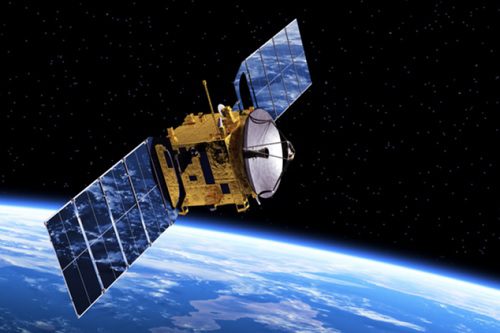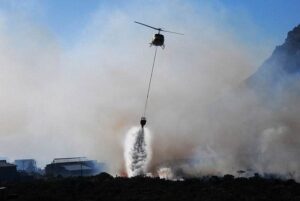Space data: How satellites are changing insurance

A burgeoning market for space data is creating a world of opportunity to better understand risks here on earth, enabling more informed underwriting, loss prevention and claims services.
Just over 10,000 satellites have been launched since the 1950s. But their number in orbit could soon rocket to 70,000 as commercial satellite operators take advantage of more sophisticated technology and growing demand for services. Elon Musk’s Starlink mega constellation alone aims to launch as many as 42,000 satellites, while France-based E-Space has proposed a constellation consisting of more than 116,000 satellites.
A revolution is underway in the commercial satellite market. Satellites are becoming smaller, more powerful and cheaper: The average cost of manufacturing and launching a satellite is now around one third of what it was in the 1990s, according to EY. Meanwhile, their sensors are gathering more granular and varied data. Optical sensors can reveal even more detailed views of the earth’s surface and human activity, while hyperspectral sensors are able to remotely analyse air, soil and water. Back on earth, cloud services and artificial intelligence help extract insights and value from space data.
Harnessing space data
Developments in satellite technology are creating exciting opportunities to use images and sensory data from above for insurance and risk management. As a pioneer in space insurance, we are now integrating geospatial imagery and sensory data, including from satellites throughout the insurance cycle, from underwriting, risk engineering and consulting, right through to claims.
In recent years, satellite data has become an important tool for insurers, aiding claims assessment and approval for natural catastrophes. As a disaster unfolds, such as a major earthquake, storm or wildfire, satellite imagery can help insurers quickly get to grips with the nature and extent of losses, particularly when areas remain inaccessible or dangerous to access after an event. This enables insurers to deploy their resources more effectively, take early action mitigate losses, and potentially accelerate the claims process.
A new way to visualise and monitor risk
However, using satellite data for claims is just the start of the journey. As satellite imagery is becoming more accessible and of higher resolution, we are starting to use it to help underwriters assess and quantify exposures. Used in combination with high-resolution aerial or drone imagery, it provides an unprecedented situational awareness in time and in space. The use of up-to-date, high-quality aerial views coupled with state-of-the art AI models can help identify risks on a given site, such as the addition of photovoltaic panels, external storage facilities, and provide a visual representation of the risks.
Natural catastrophe risks, the biggest cause of property loss for insurers and a key risk of concern for clients, is an obvious place to start. Satellite imagery can help underwriters model the impact of a flood on a site and visualise the risk in the context of the surrounding environment. But satellite data will help assess other property risks and lines of business going forward. Satellite data could, for example, help, finding the safest or most efficient route for shipping, shedding light on concentrations of risks at ports and/or in storage, and identifying potential vulnerabilities in supply chains and critical infrastructure.
The better underwriters understand the risk, the more able they are to apply appropriate premiums and conditions, or recommend loss prevention actions. The wider use of geospatial data in underwriting should also speed up the process of assessing risk and potentially reduce information requests for clients in the longer term. And while it does not provide a total picture, it can enhance risk assessment, inform decision making and pricing, and prompt further investigation and dialogue. When clients become aware of an issue, they are able to implement measures we recommended them to improve the quality of the risk.
Continuous remote risk monitoring
Given that some clients have thousands of properties throughout the world, it is not realistic to physically survey them all. However, AI-powered geospatial data will facilitate the rollout of remote surveys, which will enable insurers to inspect smaller sites that previously would not have been economical: Using AI-powered aerial imagery we aim to carry out remote surveys for around half of all property risks in the mid-term, in addition to physical inspections.
Satellite imagery will not replace physical inspections, but it will help risk engineers and consultants select and prioritise sites or optimize their preparation time for physical inspections, pinpointing areas worthy of closer attention. Clients and captive owners can also benefit directly from remote surveys, as they offer an economical way to potentially assess and monitor a large number of sites around the world, and provide an accurate vision of their risks.
While our underwriters and risk consulting teams are using satellite data to assess risks and value assets on a case-by-case basis, increasingly the process will become automated and expanded to a wider range of risks and clients. Using AI to analyse geospatial data will pave the way for continuous monitoring of risks. It will enable insurers to better understand and monitor changes in physical assets over time – such as additions to buildings or quality of maintenance – as well as changes in the surrounding environment or critical infrastructure, like maintenance of flood defences or wildfire protection.
Developing services to combat climate change
Satellite data is shaping up to be an important ally in combatting climate change and the successful transition to net zero, two of the biggest challenges faced by companies and risk managers today. Space data is already playing an important role in disaster preparedness and emergency response and is also being used by governments and scientists to monitor the environment, from measuring greenhouse gas emissions and tracking deforestation to aiding energy efficiency or tackling pollution.
Thanks to satellite data, it will become easier to understand risk exposures linked to climate change. While still early days, this data will increasingly be used to assess key assets and infrastructure for exposure to natural hazards, and to inform loss prevention and/or risk mitigations action. It can help monitor hazardous or remote assets, such as offshore wind turbines, or identify areas at high risk of wildfire or flood. Space data could be used to help optimise operations and drive energy efficiency.
Over time, insurers will be able to use remote sensing data to develop new products and services, such as provide clients with climate risk assessments and impact-modelling or parametric solutions. For example, AXA is using satellite imagery to provide parametric agricultural insurance, whereby satellites make it possible to monitor rainfall, drought and crop maturity, and therefore trigger payouts.
Giant leap
The commercial space economy has expanded by over 60% in the last decade and is now valued at roughly $400 billion. And it could grow to $1 trillion by 2030, according to Mckinsey. As the availability of space data increases, and the cost reduces, insurers will be able to expand the use of satellite data and integrate it into underwriting, risk consulting and claims. And with access to more, and better quality, geospatial data, there will be many new opportunities to better understand and mitigate risk, and prevent losses to the benefit of both insurers and clients.
Authored by Véronique Clévenot, Risk Consulting Country Manager France, AXA XL and Denis Bousquet, Global Chief Technical Officer, Space Underwriting, AXA XL




